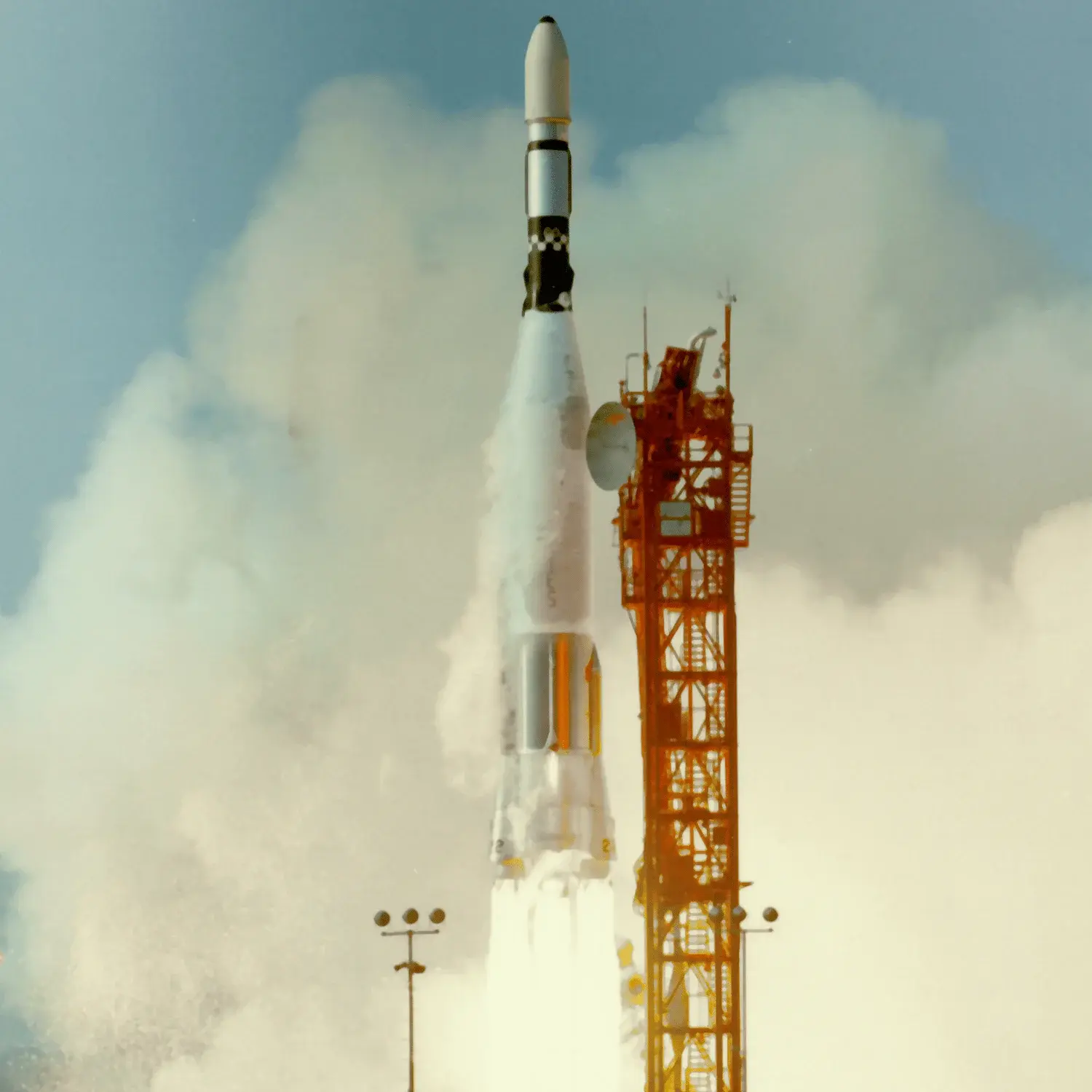KH-7 25 (Gambit-1 25), Bluebell 2C & Bluebell 2S
Launch Success
Liftoff Time (GMT)
20:30:00
Tuesday February 15, 1966
Mission Details
KH-7 25 (Gambit-1 25)
KH-7 (Keyhole 7) managed by NRO's Program A and operated this US Air Force system boasted long focal length cameras capable of identifying and measuring properties of targets such as missiles and aircraft, surpassing the resolution of the CORONA system. The spacecraft, a 3-axis-stabilized satellite separated from the Agena-D, housed the payload, camera system, and reentry vehicle (SRV), known as the OCV (Orbital Control Vehicle), built by General Electric. The KH-7 camera featured a 112 cm diameter primary mirror and achieved ground resolutions ranging from 0.61 m to 0.91 m, utilizing strip exposure techniques for capturing images with a swath width of 22 km and strip lengths of up to 741 km from its 167-kilometer orbit.
Low Earth Orbit
Bluebell 2C
Bluebell 2C (Cylinder) was an Air Force calibration satellite launched piggy-back from Vandenberg AFB aboard an Atlas-SLV3 Agena-D rocket. Two Bluebell satellites were on this launch: one in shape of a sphere (Bluebell 2S), the other in the shape of a cylinder. The prime payload was the KH-7 25 reconaissance satellite.
1 Payload
9 kilograms
Bluebell 2S
Bluebell 2S (Sphere) was an Air Force calibration satellite launched piggy-back from Vandenberg AFB aboard an Atlas-SLV3 Agena-D rocket. Two Bluebell satellites were on this launch: one in shape of a sphere, the other in the shape of a cylinder (Bluebell 2C). The prime payload was the KH-7 25 reconaissance satellite.
1 Payload
4 kilograms
Rocket

Launch Site
Stats
Atlas-Agena
64th
Mission
2nd
Mission of 1966
1966
13th
Orbital launch attempt
